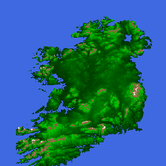Hey, Im trying to get a gaussian blur effect to work on a video source. I currently have it up and running, but i dont think i understand how its ment to work, all refrences i find use alot of greek symbols which i do not understand. But through some examples and source code i am using this..
float dif = 159;
float gaussianMask[5][5];
gaussianMask[0][0] = 2/dif; gaussianMask[0][1] = 4/dif; gaussianMask[0][2] = 5/dif; gaussianMask[0][3] = 4/dif; gaussianMask[0][4] = 2/dif;
gaussianMask[1][0] = 4/dif; gaussianMask[1][1] = 9/dif; gaussianMask[1][2] = 12/dif; gaussianMask[1][3] = 9/dif; gaussianMask[1][4] = 4/dif;
gaussianMask[2][0] = 5/dif; gaussianMask[2][1] = 12/dif; gaussianMask[2][2] = 15/dif; gaussianMask[2][3] = 12/dif; gaussianMask[2][4] = 2/dif;
gaussianMask[3][0] = 4/dif; gaussianMask[3][1] = 9/dif; gaussianMask[3][2] = 12/dif; gaussianMask[3][3] = 9/dif; gaussianMask[3][4] = 4/dif;
gaussianMask[4][0] = 2/dif; gaussianMask[4][1] = 4/dif; gaussianMask[4][2] = 5/dif; gaussianMask[4][3] = 4/dif; gaussianMask[4][4] = 2/dif;
This is a 5x5 mask i am using - i then multiply each value to a each corisponding pixel in a 5x5 area, and then add it to the original pixel
And what i end up with is a nice light show :P
Im not asking for a full explanation of all the theory on this, as i am currently reading up on it anyways, but simply want a summary of what needs to be done, so i know im going in the right direction. Or just some clarification
Thanks for any help ;)




